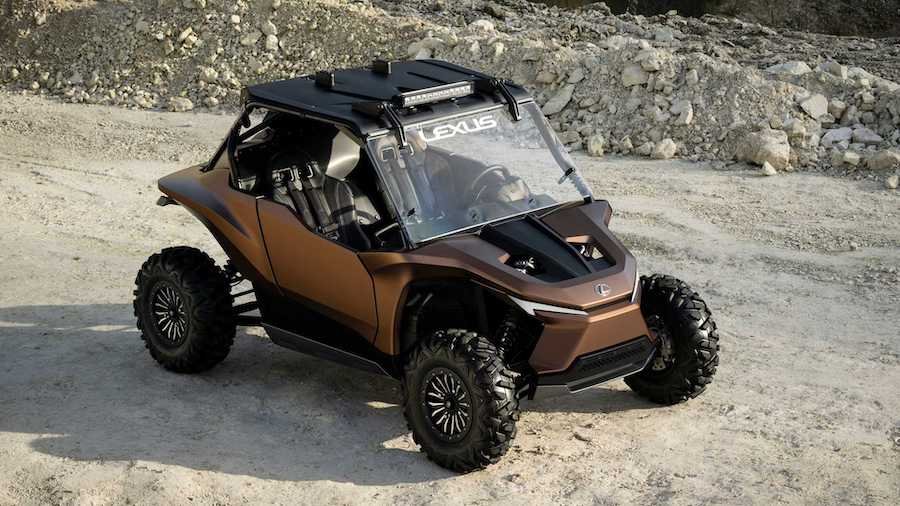New Lexus ROV is hydrogen-fuelled hint at future 4x4s

The UTV-style two-seater features exposed long-travel suspension, prominent mud-deflecting fenders, a full roll cage and chunky tyres – but Lexus maintains that it's still "the kind of vehicle that people would expect from a luxury car maker".
It uses a hydrogen-fuelled 1.0-litre engine, but Lexus hasn't given any further technical or performance details, beyond suggesting that it will meet its requirements for quietness, durability and reliability, and will offer “the exciting sound of an ICE and the responsive rise in torque that comes from the fast combustion speed of hydrogen”.
Asked by Autocar why Lexus was showing an off-road concept so disparate from its series-production models, the brand’s European vice-president Pascal Ruch said: “Why not? In the past, we've looked in very different directions - we even had a boat, which is nothing directly linked to the brand.
“In fact, we could have sold quite a lot of these boats. We sold only a handful, but there was the demand. Sometimes you have to experience new things.”
He added that Lexus is a "lifestyle brand" and suggested that there will be an affinity between its customers and this new concept. The brand isn't necessarily considering production, but Ruch said it “shows our direction when it comes to nature - trying to be close to nature, enjoying nature in a sustainable way”.
The brand already offers a highly capable off-road production car, the Toyota Land Cruiser-based LX SUV, although that isn't sold here. Ruch hinted at the potential for off-road-focused production models to arrive on sale in this region as part of Lexus’s new-era product plan.
He said that “at the moment, it’s not the plan” to bring the LX to Western Europe but added: “We feel that there is an interest, even in Europe, for off-road vehicles, hence this concept, which isn't completely crazy.
“I think you can expect from the brand something in that direction, maybe for Western Europe as well. Not exactly like the ROV, but I think there seems to be a genuine interest in off-road vehicles with a powertrain which is fit for the future in Western Europe.”
